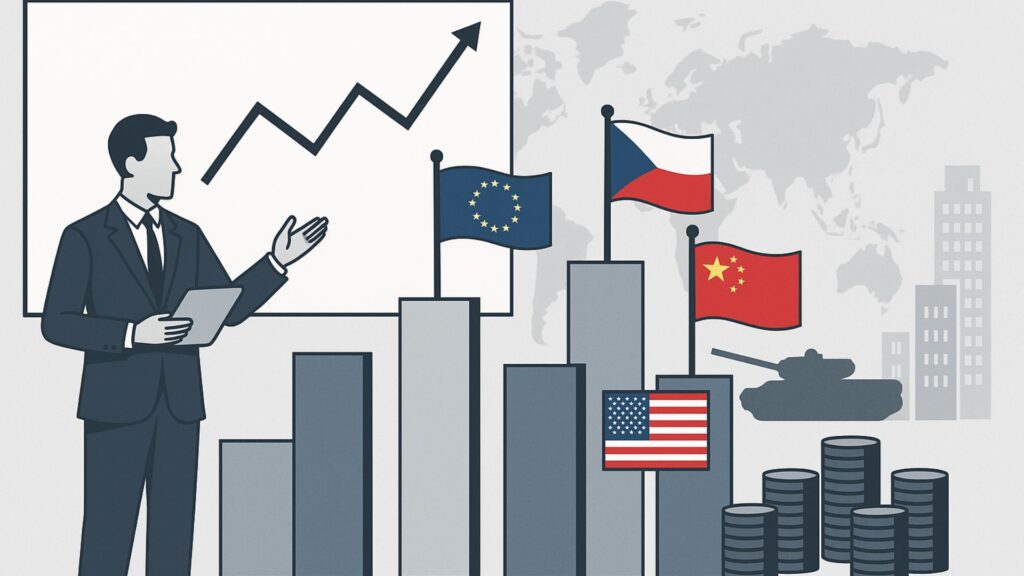
Introduction
In recent years, global financial markets have been shaken by a series of events that have reshaped how investors think about risk and opportunity. From geopolitical tensions and inflation to energy crises and political instability, these challenges have left a clear mark on how individuals allocate their capital. Among those reacting to this new reality are Czech investors, whose behavior is undergoing a noticeable transformation.
A growing number of them are moving away from traditional investment destinations such as the United States, turning instead toward Europe and other regions perceived as more stable or culturally aligned. Alongside this geographic reorientation, interest is also shifting toward specific sectors like defense, technology, and ESG-focused assets. In short, the profile of the average Czech investor is changing—becoming more cautious, more strategic, yet still held back by a conservative mindset in some areas.

A Clear Shift in Czech Investment Preferences
A recent survey published by Forbes Czechia on June 14, 2025, revealed significant trends in Czech investment behavior. According to the data, 34.9% of Czech investors now prefer to invest in European assets. Only 13.8% favor U.S. investments, while 25.4% are drawn to Asian markets, and 20.1% choose to invest within the Czech Republic itself.
These numbers reflect a substantial shift in Czech investment preferences. Investors are increasingly prioritizing stability and proximity—both geographically and economically. With rising uncertainty about U.S. policies, potential trade wars, and the possible return of Donald Trump to the presidency, many Czech savers feel more comfortable investing closer to home. The idea of the U.S. as a “safe haven” appears to be losing traction.
Strategic Sectors: The Rise of Defense
Another notable insight from both Forbes and Zlato.cz is the growing interest in the defense sector. Once considered niche or even ethically questionable, defense is now gaining recognition as a strategic and potentially profitable investment area. In today’s geopolitical climate—marked by war, security threats, and supply chain disruptions—defense is seen not only as a national priority but also as an economic opportunity.
While technology and real estate remain popular, defense is starting to compete for investor attention. Many now view it as a safeguard in times of global instability. ESG and innovation also continue to rank highly among investor priorities, especially among younger generations who want their money to reflect their values.
A Cultural Obstacle: The Fear of Investing
Despite the evolution of Czech investment preferences, one key issue remains: many Czechs are still reluctant to invest at all. This challenge is highlighted by Jan Sýkora in Ekonom.cz, who notes that a large portion of the population continues to leave their savings idle in bank accounts—failing to take advantage of long-term growth opportunities.
This behavior reflects a deeply rooted cultural mindset: risk aversion, mistrust of financial institutions, and limited financial literacy. The result is a missed opportunity, especially in times of inflation, where uninvested savings can quickly lose value. To overcome this barrier, financial education must play a central role in empowering Czech citizens to make informed investment decisions.
Conclusion
The landscape of Czech investment preferences is undergoing a major transformation. European and Asian markets are gaining favor over traditional U.S. options, and sectors like defense, technology, and sustainability are attracting increased interest. However, despite this progress, many Czech investors are still hesitant to act—preferring to hold cash rather than invest strategically.
Moving forward, promoting financial education, increasing access to trustworthy information, and fostering a culture of transparency will be essential. Only then can Czech investors fully harness the potential of their capital and contribute to both their own financial well-being and the broader economy.
AI – generated image.





